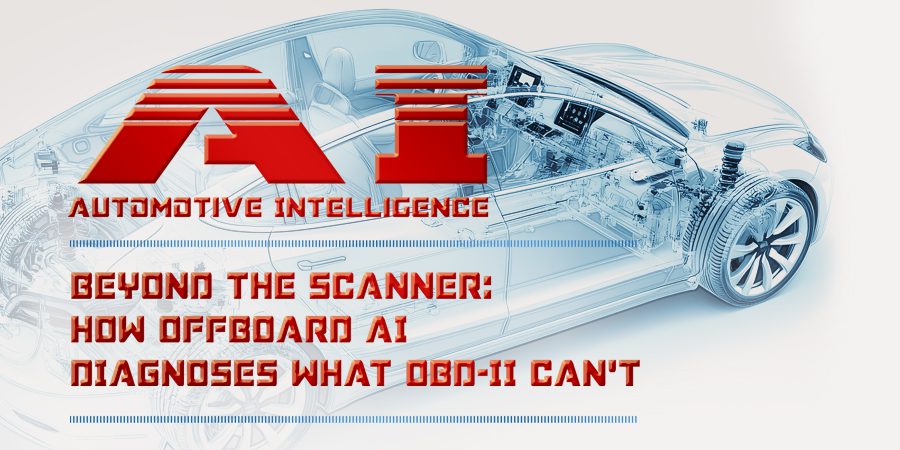In the Jack Reacher books and movies, Jack Reacher often says this line, “In an investigation, details matter.” And in this case, it is very much about the details. We all approach electrical faults differently; some with a sense of joy, some with apathy, and some with dread. It all depends on your skill level and experience. But one thing to ruin anyone’s day is when the code description leads you astray. Only after hours of testing wires, connections and solenoids do we find out we were on the wrong circuit. Not only have we lost the labor-chasing ghost, but if a valve body was installed (as you can’t get single solenoids on these Aisin AS69RC transmissions), there’s the cost of that in both time and money. And after all of that you have the same code return on a key-turn or road test. Then maybe a TCM is thrown at it, and the code still persists.
This could easily happen when we read the code description on the scan tool, arm ourselves with a schematic, a light, and a meter, and start hunting electrical faults. For example, let’s look at code P0966 – Pressure Control Solenoid 2 Control Circuit Low. Normally, this description is easy enough to diagnose. A circuit low code means the voltage return to the computer is lower than expected. In most cases this means there’s an open in the circuit. Using the schematic in Figure 1, we can see that the PCS 2 circuit has two wires, a power source, and a ground source. This ground is also the control circuit; the computer will use this circuit to control the solenoid function.
 With the key on (or the engine running), the TCM will provide 12 volts on the Dark Green w/Light Green wire. That voltage will then travel down the wire into the solenoid coil and exit out the Dark Green w/Tan wire. Here is where the TCM is monitoring voltage. With the key ON the TCM expects to see battery voltage on the Linear Solenoid 2 (–) circuit. When it sees less than the battery voltage it will set the circuit low code. This usually means an open in either wire or solenoid or a short to ground on either wire or solenoid. It’s a simple circuit and a simple explanation of possible faults. And if you took your meter and probed around, you’d find that the voltage return was correct. You probably assume the TCM is faulty and that you’re reading the voltage incorrectly. And if you changed that TCM, you’d find the code was back as if nothing had changed.
With the key on (or the engine running), the TCM will provide 12 volts on the Dark Green w/Light Green wire. That voltage will then travel down the wire into the solenoid coil and exit out the Dark Green w/Tan wire. Here is where the TCM is monitoring voltage. With the key ON the TCM expects to see battery voltage on the Linear Solenoid 2 (–) circuit. When it sees less than the battery voltage it will set the circuit low code. This usually means an open in either wire or solenoid or a short to ground on either wire or solenoid. It’s a simple circuit and a simple explanation of possible faults. And if you took your meter and probed around, you’d find that the voltage return was correct. You probably assume the TCM is faulty and that you’re reading the voltage incorrectly. And if you changed that TCM, you’d find the code was back as if nothing had changed.
 But in this case, the details do matter, as do the details of the code description. The details got mixed up sometime between when the codes were written, and the solenoid nomenclature was finalized. As you can see in the above example, the PCS 2 Control Circuit is low; the actual circuit with the fault is the PCS 1 Control Circuit. For you to see, all of the linear solenoid codes listed refer to a different actual linear solenoid. The table in Figure 2 lists the PCS codes, starting with the DTC, the description you’ll get on your scan tool, and the actual circuit at fault. The only exception will be the TCC PCS did not get renamed. Not on this table are codes related to the Shift Solenoid 1 as the code description is accurate.
But in this case, the details do matter, as do the details of the code description. The details got mixed up sometime between when the codes were written, and the solenoid nomenclature was finalized. As you can see in the above example, the PCS 2 Control Circuit is low; the actual circuit with the fault is the PCS 1 Control Circuit. For you to see, all of the linear solenoid codes listed refer to a different actual linear solenoid. The table in Figure 2 lists the PCS codes, starting with the DTC, the description you’ll get on your scan tool, and the actual circuit at fault. The only exception will be the TCC PCS did not get renamed. Not on this table are codes related to the Shift Solenoid 1 as the code description is accurate.
Another note is typically, when solenoids are labeled by letters instead of numbers, the letter-to-number relation is A=1, B=2, etc. In the case of the AS69RC, the relationship between letters and numbers is also in disarray. In Figure 3, we have the solenoid ID and descriptions shown. The letter nomenclature is alphabetical, with A at the front of the valve body and G at the rear end of the valve body. However, when we look at the solenoid numerical ID, it seems random, with PCS 7 at the front of the valve body and PCS 5 at the rear, with PCS 1 in the middle.
What is not misleading in the code-to-solenoid description is the Shift Solenoid 1, the only on-off type solenoid on the transmission. So, any fault indicating a problem with that solenoid or circuit is for that solenoid (or circuit).
 It is tough enough to diagnose electrical faults without any misleading code definitions. While most manufacturers accurately match the definition and the description, the Aisin unit is not the only example. To protect yourself from this, especially if it’s an unfamiliar code, read the definition and the diagnostic steps.
It is tough enough to diagnose electrical faults without any misleading code definitions. While most manufacturers accurately match the definition and the description, the Aisin unit is not the only example. To protect yourself from this, especially if it’s an unfamiliar code, read the definition and the diagnostic steps.
If you need help in automotive electrical testing, check out the ATRA Technical Training Center through our Virtual Training Solutions (VTS). There, you can find volumes of information on diagnostics, rebuilding, past seminars, and reprogramming. Members can access the VTS systems by signing into their account at members.atra. com and selecting Virtual Training Systems. Remember, writers create repair manuals and translate the information from engineers. They don’t always get it right; that mistranslation can lead you down the wrong path. That’s where ATRA comes in.
















